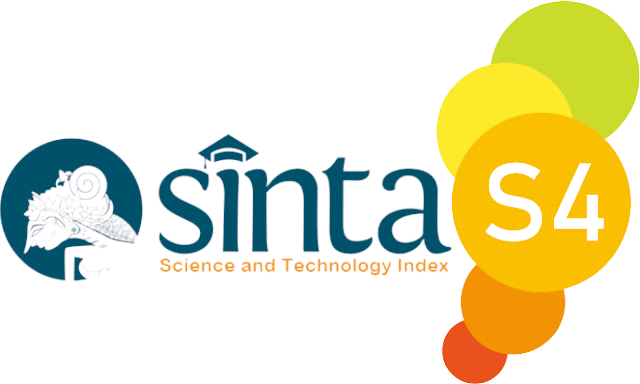NORTH KOREA’S DENUCLEARIZATION TREATY WITH THE UNITED STATES OF AMERICA IN 2018
Abstract
This research discusses the denuclearization agreement between The United States and the Republic of Korea, known as the “123 Agreement,” in 2018. This study explains the process of the denuclearization agreement between the two countries and the reasons behind the denuclearization agreement using the de securitization concept, interdependency theory, denuclearization concept, and principal negotiation theory. This research method is qualitative research using library research and official document. The results of this study indicate that peace efforts through denuclearization negotiations experienced ups and downs in the process, and the achievement of the denuclearization negotiation process was based on the respective interests of the United States and North Korea. North Korea has an interests economic sector. North Korea is being hit by poverty and it can be said that the country will go bankrupt. With this agenda, North Korea denuclearizes to secure the economic sector. This research concludes that the denuclearization agreement failed at the second meeting in Hanoi, Vietnam. This failure is because the United States does not want to lift the sanctions imposed in full even though North Korea has stopped testing and closed its nuclear development site
Downloads
References
(2018). Why Does North Korea Want nukes. 14 September 2021. https://www.heritage.org/insider/summer-2018-insider/why-does-north-korea-want-nukes.
(2019). Pelucutan Senjata dan Non-proliferasi Senjata Pemusnah Masal. 13 September 2021. https://kemlu.go.id/portal/id/read/90/halaman_list_lainnya/perlucutan-senjata-dan-non-proliferasi-senjata-pemusnah-massal.
(2021). Uji Coba Bom Hidrogen Korut Menyebabkan Gempa 6.3 SR. 15 September 2021. https://news.okezone.com/read/2017/09/03/18/1768439/uji-coba-bom-hidrogen-korut-mengakibatkan-gempa-6-3-sr.
Afra, Augesti. (2019). Senjata Pemusnah Massal yang Disebut Paling Berbahaya di Dunia. 17 September 2021. https://www.liputan6.com/global/read/3933 937/4-senjata-pemusnah-massal-yang-disebut-paling-berbahaya-di-dunia.
Ahn, M. Su. (2011). What Is the Root Cause of the North Korean Nuclear Program? JSTOR. https://www.jstor.org/stable/23526518
Allison, P. (2010). Survival Analysis Using SAS: A Practical Guide. Cary, NC, USA: SAS Institute Inc.
Ardiani, Javira, Bima Jon Nanda dan Zulkifli Harza. (2020). Kepentingan Amerika Serikat dalam Proses Denuklirisasi Korea Utara. Frequency of International Relations March, Vol 2.
Avery, E. Chanlett dan Mi Ae T. (2013). North Korea: U.S. Relations, Nuclear Diplomacy, and Internal Situation. Congressional Research Service.
BBC News Indonesia. (2018). Kim-Trump Tandatangani ‘Kesepakatan’: Hubungan AS-Korut Akan Berbeda Sama Sekali. 29 Desember 2021. https://www.bbc.com/indonesia/amp/dunia-44447915.
Digital Repository UMY. 2015. 14 September 2021. http://thesis.um y.ac.id/datapublik/t15447.pdf.
Ecker, Carter J. (1990). Korea Old and New a History. Seoul:
Elsig, M. (2011). Principal-agent theory and the world trade organization: Complex agency and “missing delegation.” European Journal of International Relations. https://doi.org/10.1177/1354066109351078
Gastelum, Z. N. (2012). International Legal Framework for Denuclearization and Nuclear Disarmament – Present Situation and Prospects. Pacific Northwest National Library.
Geno Vybra Yoga, Bima Jon Nanda, Sofia Trisni. Respon Amerika Serikat Pada Masa Pemerintahan Presiden Donald Trump Terhadap Program Nuklir Korea Utara. Andalas Journal of Diplomacy and International Studies.
K. McGuire, K. (2018). China - South Korea Relations: A Delicate Détente. The Diplomat.
Kerr, Paul. (2003). Arms Control Association Fact Sheet: Cronology of U.S-North Korean Nuclear and Missile Diplomacy Analisys. Washington D.C.
Manyin, M. E., E. Chanlett-Avery., & B. R.Williams. (2019). South Korea: Background and U.S. Relations. Congressional Research Service.
Masterson, J. 2020. hronology of U.S.-North Korean Nuclear and Missile Diplomacy. 23 Desember 2021. https://www.armscontrol.org/factsheets/ dprkchron.
Mattis, Jim. (2018). National Defense Strategy of The United States of America. Departemen Pertahanan Amerika Serikat. https://dod.defense.gov/Portals/ 1/Documents/pubs/2018-National-Defense-Strategy-Summary.pdf.
Miller, G. J. (2005). The political evolution of principal-agent models. In Annual Review of Political Science. https://doi.org/10.1146/annurev.polisci.8.082103.104840
Moleong, Lexy J. (2007). Metodologi Penelitian Kualitatif. Bandung:
Morgenthau, Hans J. (1951). In Defense of the National Interest: A Critical Examination of American Foreign Policy. New York: University Press of America.
Nailufar dan Nibras Nada. 2020. Perjanjian Senjata Nuklir: Isi, Pelanggaran, dan Posisi Indonesia. 14 September 2020. https://www.kompas.com/skola /read/2020/01/09/173000369/perjanjian-senjata-nuklir--isi-pelanggaran-dan-posisi-indonesia?page=all.
Neufeld, J. (1990). The Development of Ballistic Missiles in the United States Air Force, 1945-1960. Office of Air Force History, United States Air Force.
Pennington, Matthew. (2017). Trump Strategy on NKorea: ‘Maximum Pressure and Engagement. 12 Desember 2021. https://www.apnews.com/86626d21 ea2b45c79457a873a747c452.
Permata, Inda Mustika. (2018). Analisis Konstruktivisme: Perilaku Korea Utara terhadap Denuklirisasi. Andalas Journal of International Studies Vol VII No 2.
Pham, J. Peter. (2008). What Is in the National Interest? Hans Morgenthau's Realist Vision and American Foreign Policy. The Journal of the National Committee on American Foreign Policy vol. 30.
Rahmadi, Takdir. (2011). Mediasi Penyelesaian Sengketa Melalui Pendekatan Mufakat. Jakarta: Rajawali Press.
Remaja Rosdakarya.
Spring, Baker. (1999). Missile Defense Testing Needed To Meet North Korea Threat. Washington: The Heritage Foundation Executive Memorandum.
Strigunov, K., Manoylo, A., & Ponomareva, E. (2019). On denuclearization of North Korea. Mezhdunarodnye Protsessy. https://doi.org/10.17994/IT.2019.17.3.58.7
Sugiono, (2009), Metode Penelitian Kuantitatif, Kualitatif dan R&D. Bandung: Alfabeta.
Wæver, O (1989). Security, the Speech Act: Analysing the Politics of a Word, Copenhagen Centre for Peace and Conflict Research (No. 19). Working Paper.
Wæver, O. (1995). Securitization and De-securitization. in On Security, Lipschutz, R (Editor), New York: Columbia University Press. 46-86.
Wæver, O. (2000). The EU as a Security Actor: Reflections from a Pessimistic Constructivist on Post- Sovereign Security Orders. In Kelstrup, M. (Ed.), Williams, M. (Ed.). (2000). International Relations Theory and the Politics of European Integration. London: Routledge.
Wardhani, Baiq. (2014). Realisme. Departemen Hubungan Internasional: Universitas Airlangga.
Washburn, E. (2023). Russia Has The Most Nuclear Weapons In The World—Here Are The Other Countries With The Largest Nuclear Arsenals. February. https://www.forbes.com/sites/emilywashburn/2023/02/24/russia-has-the-most-nuclear-weapons-in-the-world-here-are-the-other-countries-with-the-largest-nuclear-arsenals/?sh=5b0a4c4d9300
Copyright (c) 2023 Marcellino Abel Harnanda, Suhanto Suhanto

This work is licensed under a Creative Commons Attribution 4.0 International License.






